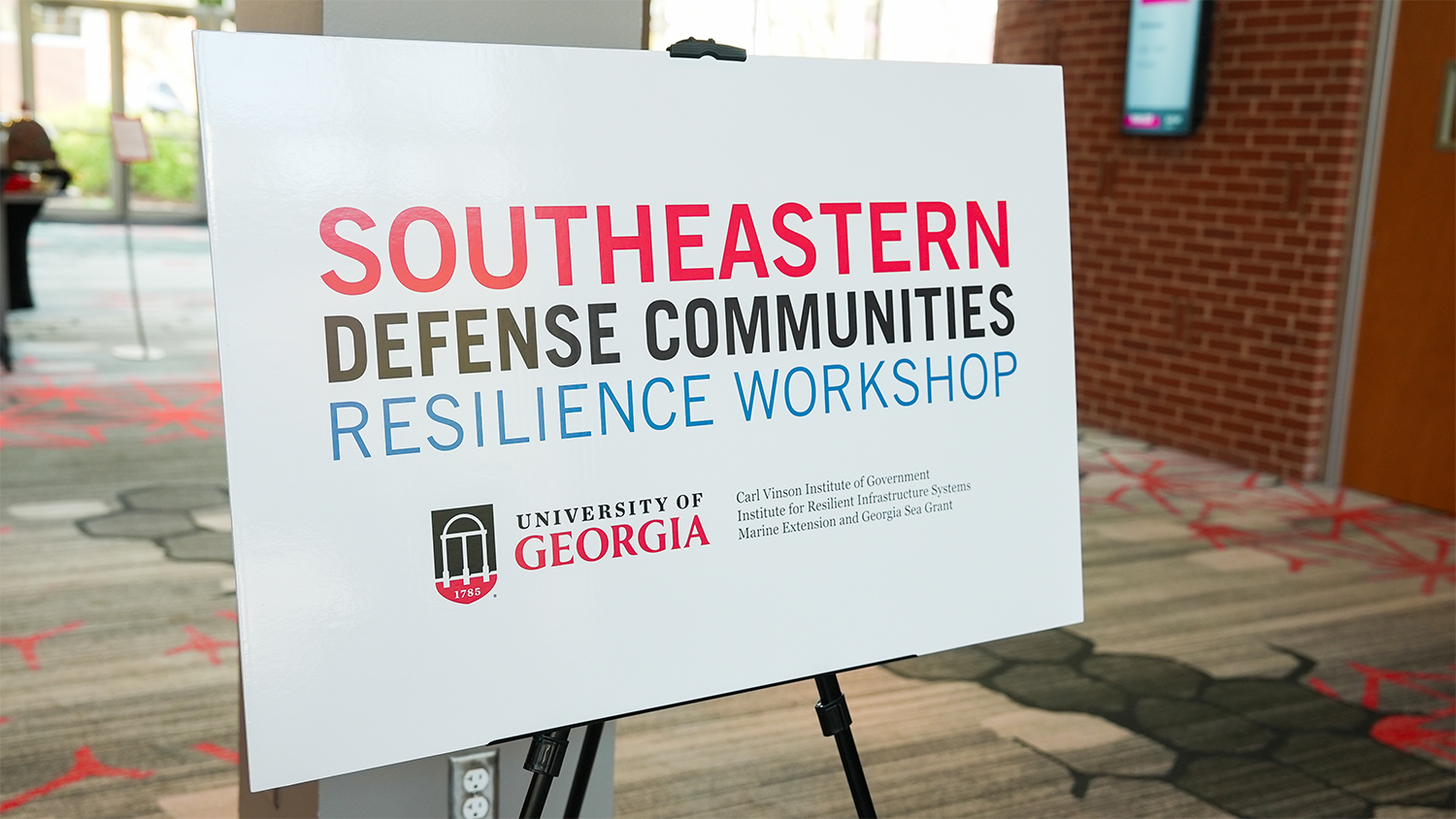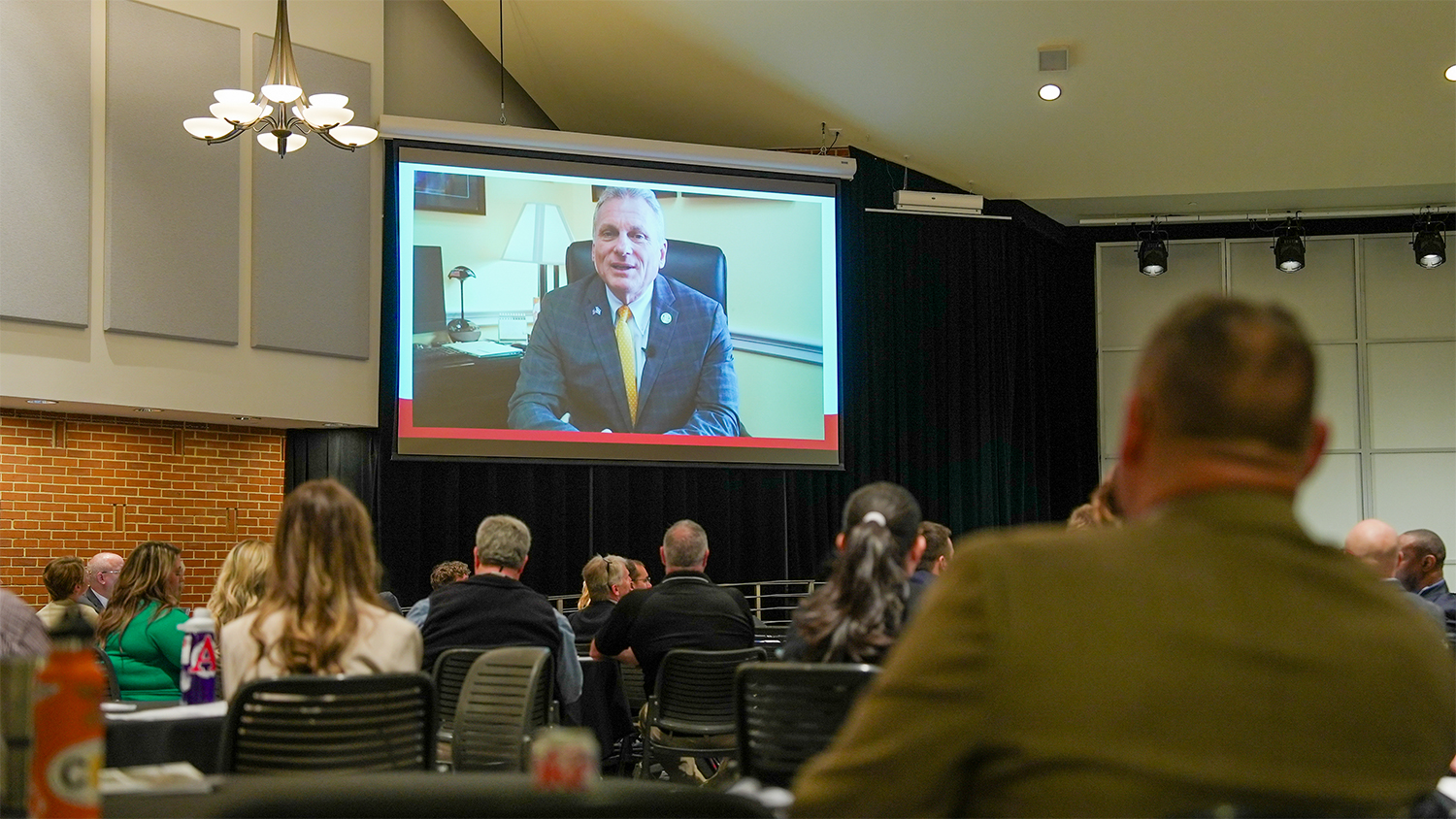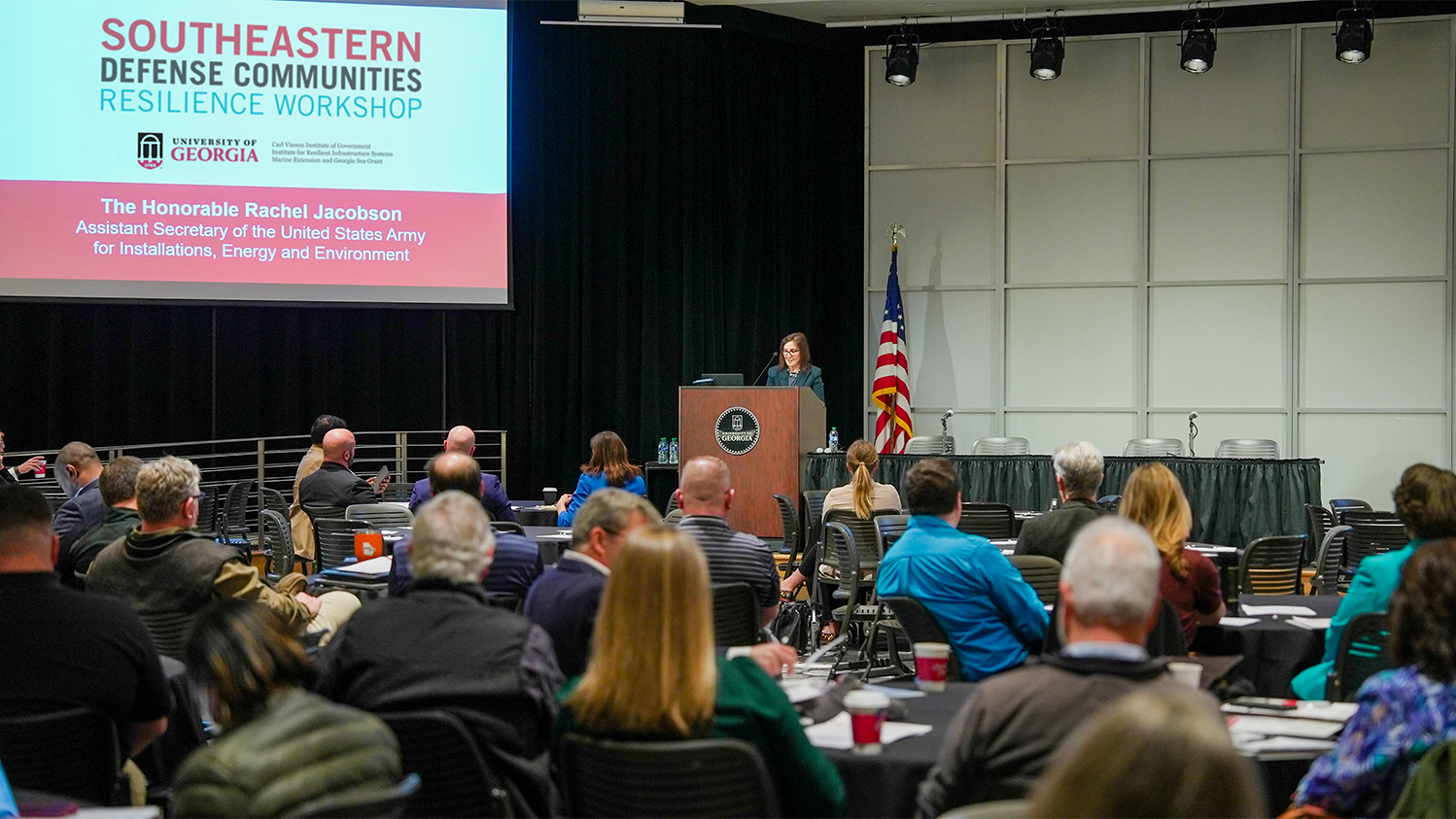Leaders convene to learn best practices for nature-based solutions
Military personnel, resilience experts and researchers from across the southeast learned how the University of Georgia is using nature-based solutions to strengthen military installations and their surrounding communities at the Southeastern Defense Communities Workshop March 13-14 in Athens.
Rachel Jacobson, assistant secretary of the Army for Installations, Energy and Environment, gave the keynote address.
“The University of Georgia’s Defense Community Resilience Program is a model example of the kind of partnership we are looking to build on,” she said. “It will strengthen military readiness, environmental protection and economic development.”

The Defense Community Resilience Program (DCRP) is a collaborative partnership between the Carl Vinson Institute of Government and the Institute for Resilient Infrastructure Systems (IRIS) at UGA. The program works with military installations and their surrounding communities to share UGA expertise in innovative nature-based engineering, infrastructure planning, governmental policy, economic development and community engagement to strengthen military and community resilience.
“UGA is already a trusted partner across Georgia. Fostering learning and collaboration among professionals will help forge new relationships to support enhanced resilience in communities so critical to national security,” said the Institute of Government’s Scott Pippin, program leader.
The university recently received $5 million in federal funding to support the Defense Community Resilience Program. Submitted by Rep. Earl L. “Buddy” Carter (GA-01), the funding builds upon the U.S. Army Corps of Engineers’ Engineering With Nature® (EWN) initiative. The funds will allow the program to expand its reach to support more installations and communities.
“I’m proud to support the work going on at the University of Georgia as it works to bring its long history of public service and outreach to assist our military installations and their supporting communities,” Rep. Carter said in a video welcome for the workshop. “The longterm presence of these outreach experts in these communities sets the stage for developing resilient infrastructure and community development projects.”

The University of Georgia recently hosted the Southeastern Defense Communities Workshop in Athens. The event brought together military personnel, resilience experts and researchers from across the southeast to discuss solutions to strengthen military installations and their surrounding communities. Above, Rep. Buddy Carter (GA-01), gives a welcome via video. At top, Rachel Jacobson, assistant secretary of the Army for Installations, Energy and Environment, gives the keynote address. (Photo by Sara Ingram)
DCRP is currently applying nature-based solutions to projects such as Laundry Creek at Fort Moore. The stream, which runs adjacent to Lawson Army Air Field, was relocated and channelized decades ago. The stream has since widened due to flooding and erosion, presenting a safety risk to approaching aircraft and Army personnel.
Rather than using a traditional concrete culvert to fix the problem, Daniel Wyatt, a resilience professional with the Institute of Government, suggested nature-based engineering to return the creek to its original location, which more effectively supports Fort Moore’s mission, aquatic connectivity, stormwater management and native ecosystems and species.
“It was a lightbulb going off moment,” said Brent Widener, chief of environmental management at Fort Moore. “We probably never would’ve considered this nature-based solution, so having a partner like UGA come in and present ideas that can save money and time, and also support mission, ecosystem and species resiliency is a win-win-win scenario.”
The event brought together engineers, legal experts and ecologists to identify common challenges and potential opportunities for more collaboration, which is a hallmark of the effort.
“We are moving away from tactical and reactive approaches and fusing these different disciplines, which involves holistic planning and system-level design with a focus on mission and especially people,” said Brian Bledsoe, Georgia Athletic Association Distinguished Professor in Resilient Infrastructure and founding director of IRIS.
Representatives from military installations were encouraged by the networking opportunity and that UGA is taking the lead in organizing efforts and disseminating information among stakeholders.
“Universities are key because they’re able to do the trial-and-error and share their results so we can then benefit,” said Gary Herndon, natural and cultural resources manager for Marine Corps Air Station in Beaufort, South Carolina.
Herndon, who is also a farmer, credited UGA with fulfilling its land- and sea-grant mission.
“That’s why the land grant was formed—to help farmers be successful and bridge that gap between education and practice,” he said.
Attendees also discussed the need for more communication across agencies and streamlining regulatory permitting and environmental compliance.
“Bringing these leaders together to discuss current challenges and identify future opportunities is central to our mission to inform and inspire innovative work on behalf of communities across Georgia,” said Rob Gordon, director of the UGA Institute of Government.
Jacobson also announced the development of a regional Intergovernmental Support Agreement (IGSA) between the Army and the University of Georgia that will allow installations across the southeast to tap into the expertise at UGA to develop climate planning and strengthen installation resilience. Established in 2013, IGSAs are public-private partnership agreements between Army installations and state and local government for the provision, receipt or sharing of installation support services. In Georgia, 22 IGSAs represent a total annual savings of $6.8 million.
“This is great news that strengthens relationships fostered by the UGA Institute of Government. We look forward to continuing to work with our military partners on solutions to transform communities across the state and the region,” Gordon said.
The Southeastern Defense Communities Workshop was hosted by the Carl Vinson Institute of Government, the Institute for Resilient Infrastructure Systems (IRIS), Marine Extension and Georgia Sea Grant at UGA.
For more information about the Defense Community Resilience Program, visit Defense Community Resilience Program.
ABOUT THE DEFENSE COMMUNITY RESILIENCE PROGRAM
The Defense Community Resilience Program is a collaborative partnership between the Carl Vinson Institute of Government and the Institute for Resilient Infrastructure Systems (IRIS) at the University of Georgia. The program works with military installations and their surrounding communities on innovative nature-based engineering, infrastructure planning, governmental policy, economic development and community engagement. Based in Athens, UGA’s Defense Community Resilience Program employs resilience professionals based in partner defense communities to serve as liaisons with the installations, adjacent communities and UGA’s network of researchers and technical experts from academic, government, private and nongovernmental partners. Core aspects of the Defense Communities Resilience Program align with the Network for Engineering with Nature (N-EWN), which was co-founded by IRIS and the U.S. Army Corps of Engineers to develop innovative natural infrastructure solutions to address community and installation vulnerabilities. The program currently is engaged in Georgia communities surrounding Fort Moore, Fort Stewart and Hunter Army Air Field, and Kings Bay Naval Submarine Base. Work also extends into coastal South Carolina and Florida.
